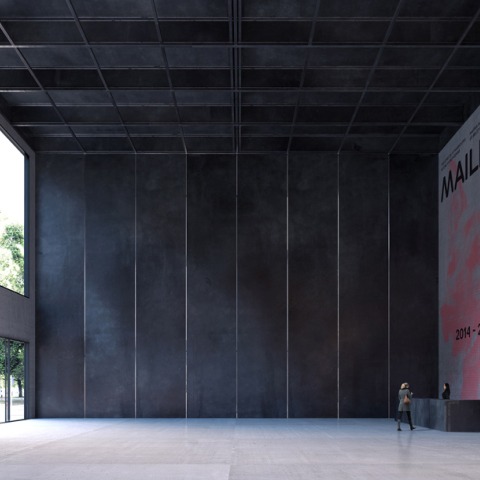The idea of Le Maillon theatre was to reach outside of its walls and extract the performing arts world from its occasional elitist position. Considering this aspiration and this singular history, our approach aims at conceiving more than a place: a genuine artistic machine, where stage acting and its grounds of production meet.
Description of project by LAN
Since the beginning, the vocation of Le Maillon theatre was to reach outside of its walls and extract the performing arts world from its occasional elitist position. Considering this aspiration and this singular history, our approach aims at conceiving more than a place: a genuine artistic machine, where stage acting and its grounds of production meet.
The project substitutes the traditional composition based on the foyer – rooms – logistics triad for the idea of a territory mainly constituted with free spaces, as many voids to reveal and activate. Forming a framework to be able to receive all the considered scenarios, a grid enhances the flexibility and creates places with a wide range of potential uses.
The wall becomes what defines both these voids’ status and character. On the outside, facades facing the public space become the interface, from which Le Maillon’s history can be perpetuated.An alternation of volumes and voids give rhythm to the building’s skin, composed of colored concrete and large windows looking out to the city. The geography and location of the project invites us to pursue the logic initiated by the urban project, making up an articulation by stitching up the surrounding elements.
From the main axes, the initial extrusion of the plot was carved in order to obtain a volume culminating at the end of the Schutzenberger avenue, creating an angle for the Adrien Zeller piazza and an urban beacon from the Jean Wenger Valentin street.From the outside, this volume suggests a mysterious interiority, changing from day to nightlight.It is a territory of contrasts, surprises, a spatial maze, a landscape articulated between courtyards and terraces. Inside, Piranesian public spaces link together the different rooms, reception space and streets.
Façades form light filters allowing the eye to view the city, the park and the surrounding architecture. At night, they become screens by releasing colorful projection of images, as if they were printed on the glass. Abstraction is overcome by figuration, the constant completed by the ephemeral.
CREDITS. DATA SHEET.-
Program.- Construction of the new Le Maillon Theater.
Architects and team.- LAN (mandate architect), Terrell (Framework and fluids engineers), Franck Boutte consultants (sustainable engineers), Bureau Michel Forgue (Quantity surveyor), Lamoureux (acoustics), Changement à vue (Scenography)
Dates.- 2013.
Client.- City of Strasbourg.
Budget.- € 16.225M excl. VAT.
Area.- 7,017m²
Phase.-In Progress.










































